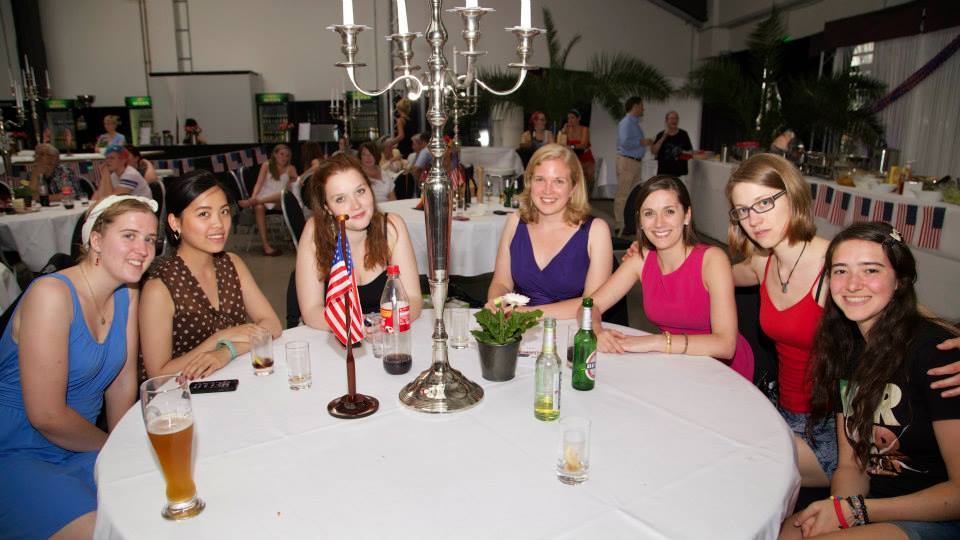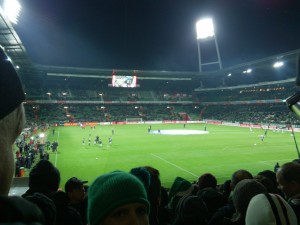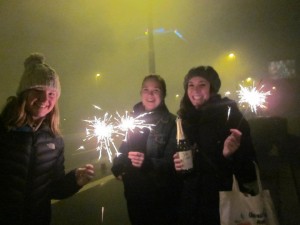On May 23, nine of the ten current Dickinson-in-Bremen students decided to form a team together with Verena and former Dickinsonian Julie King (Class of 2012) to run a 5K through Bremen’s city cen ter. Read here, what some of the students had to say about the run.
ter. Read here, what some of the students had to say about the run.
Margaret:
The Bremer Nachtlauf was the first time I’ve ever run a 5K, and I simply couldn’t have imagined a better experience! The start/finish line was located right in the magnificent city center, directly before the Town Hall and St. Petri Dom Cathedral, and the route of the run took us through the city center streets and directly along the banks of the Weser river. It was a wonderful experience I won’t soon forget to run that great route with people lining the streets and cheering us on. Definitely a highlight from this semester abroad in Bremen!
Sean:
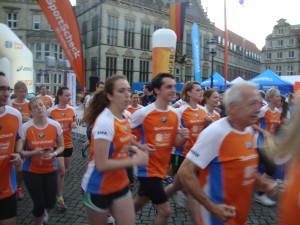
Anna and Sean
The Bremen Nachtlauf was a great treat, especially considering I hadn’t run a proper race in nearly 5 years. Despite my long hiatus, I was quite pleased with my overall performance – at roughly 24:30, the time was not my best but also far from my worst. I was also shocked at how stereotypically German the event was: At the finish line we were given not only the usual fresh fruit and water, but also beer and Apfelschorle, two immensely German staples. Overall it was an amazingly rewarding and fun experience.
Devon:
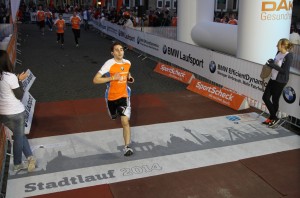
Devon finishing strong
The Bremer Nachtlauf was my first 5k or any sort of running event of any sort, but it certainly proved to be a lot of fun. I saw parts of the city I never had and a very certain ethos from those around me. I felt very together with the other racers, and while we weren’t running for any cause other than fun, it certainly made me feel like I belonged.
Anna:
Running together in the Nachtlauf was really fun. Even though I’ve been here for 7 months, I still discovered a few new parts of Bremen on the run!
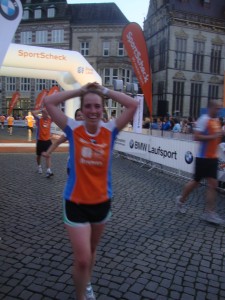
Anna exhausted, but happy
Joan: I’m so happy to have taken part in the Nachtlauf. It was great running through Bremen with everyone and having people cheer us on!
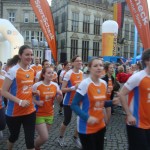
Danette with green pants
Danette:
I was a bit apprehensive when I decided to sign up for this 5K as I hate running, but I wasn’t going to cave on the motto of my year abroad: “Do not say no to anything within reason”. Certainly, a 5K was within reason and so I had to say yes. I really do hate running, I get bored quickly and my thoughts tend to wander, but I talked with Joan and since we were in about the same physical condition we decided to run the race together. It was great having someone to run with since we were able to chat and keep each other company. I will admit, I complained a bit (well a lot) before the race and probably during, I’m not sure you’d have to ask Joan. But I am so glad I ran it. It was a great sense of accomplishment and I can finally check running a 5K off my bucket list.
Shuwei:
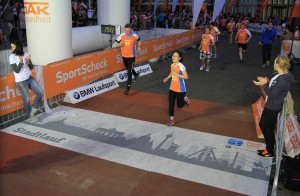
Shuwei at the finish
“Stadtlauf” in Bremen is really about people, males and females, young and old, all getting together and enjoy sport. The running itself is therefore very enjoyable, the music, the atmosphere, and the beautiful scenery over Weser river along the way. It’s definitely one of the most unforgettable experiences I’ve had here in Bremen.
Janie:
On May 23, the Dickinson in Bremen students completed the “City Run” through the streets of Bremen. Although I really enjoy running and used to run cross country, I was actually a bit nervous: this 5K run was my first “official” 5K run and I had only trained very minimally for it. Despite that, before the run began, the atmosphere in the city was really exciting and the weather was perfect. During the run, I almost had to stop twice due to my asthma. But I did not give up and instead ran the entire time! My time of completion was around 32 minutes – I was really proud of myself. After the run there were apples, bananas, juice, and beer for all participants, for which I was very grateful. It was really fun to run with the other Dickinsonians as a “team” and I would definitely recommend this event to the future Dickinsonians who will study in Bremen.
